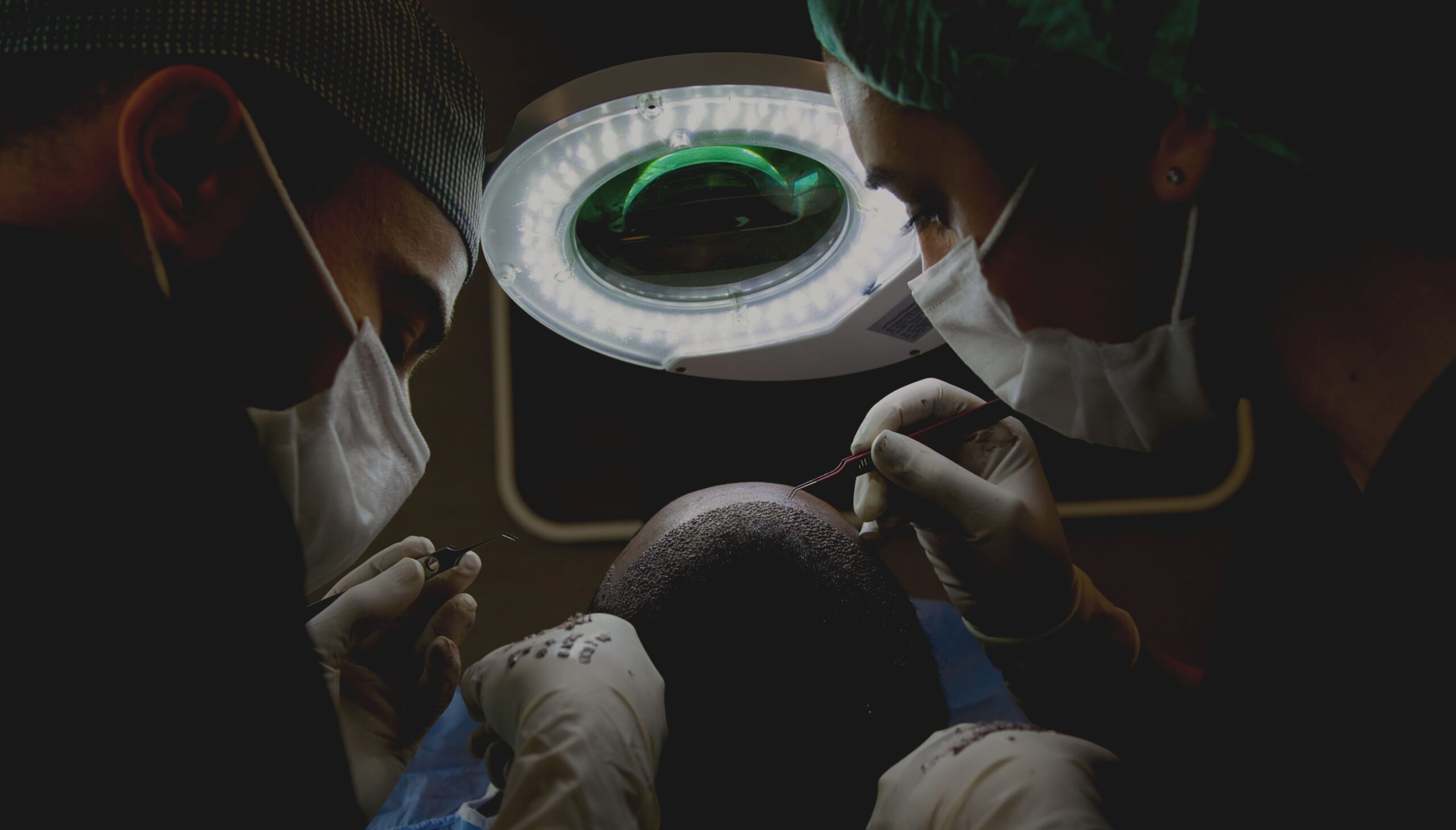Frequently Asked Questions (FAQ)
A hair transplant is one of the most commonly used treatments for cases of alopecia (hair loss). It is a minimally invasive surgical technique performed by medical professionals. Through hair transplantation, it is possible to restore hair in bald or thinning areas. Various methods can be used, with the FUE (Follicular Unit Extraction) technique being the most common.
The FUE (Follicular Unit Extraction) technique involves harvesting individual hair follicles, one by one, from a donor area and implanting them into the thinning or bald areas. This method helps to create a fuller and more natural-looking hairline.
If you are healthy and have a suitable donor area, you may be a good candidate for a hair transplant. We recommend booking a free consultation so our team can assess your individual case.
Local anaesthesia is applied to the scalp before the hair transplant is performed. As a result, the procedure itself is virtually painless, with only minor discomfort possible during the initial stage of the anaesthesia application.
Since the hair extracted from the donor area does not carry the genetic code for alopecia (hair loss), once transplanted, it does not fall out again. The results of the hair transplant are permanent.
Hair transplantation is the most effective and definitive technique for treating alopecia. However, at HairScience we offer a wide range of other techniques that can also be used. PRP, Mesotherapy, and Microneedling are just a few examples that may be used as a complement to a hair transplant or as alternatives. Discover our full range of treatments on our homepage.

The cost of a hair transplant varies depending on the type of procedure and the number of follicular units to be transplanted. Only after a proper and personalised assessment by the HairScience medical team can an accurate quotation be provided. For more information, book your free consultation today!
A hair transplant is a surgical procedure and, therefore, unquestionably a medical act. At HairScience, all surgical procedures are performed exclusively by qualified doctors.
The duration of the procedure may vary, but on average it takes between 5 to 7 hours. Between the extraction of follicular units from the donor area and their implantation in the recipient area, a short break is provided so you can rest and have a light meal.
The follicular units are extracted from the donor area. The donor area is usually located at the back and sides of the head, where the hair is genetically more resistant to hair loss.
In selected cases, it may be possible to consider the BHT technique (Body Hair Transplant – learn more about BHT). With this method, follicular units can be extracted from other parts of the body, such as the beard, chest, or abdomen, and transplanted to the scalp.
In most cases, the hair is shaved before the transplant. However, if for personal or professional reasons you prefer not to shave your hair, we can perform the transplant using the LHT (Long Hair Transplant) technique. With this method, shaving is not required, although the procedure may take longer and be more costly.
(Learn more about the LHT technique – Long Hair Transplant)
Recovery after a hair transplant is generally quite quick. Although absolute rest is not required, we do recommend following certain guidelines, especially regarding rest and hygiene care. The first three to four days are essential for recovery, so we advise returning to work only after this period. More intense activities, such as going to the gym or wearing a helmet (e.g. for motorbike use), should only be resumed after two weeks to one month following the procedure.
It is extremely important that the patient is aware of the different stages of hair growth following the procedure. Between the fourth and sixth week, it is normal for the transplanted hair to fall out — this is part of the natural process. After this phase, new hair begins to grow. Within the first two to three months, the initial signs of hair growth become visible. At around six months, very satisfactory results can usually be observed, but the final results are typically visible approximately one year after the transplant.
Any injury to the skin triggers a healing process that leads to scarring. When a hair transplant is performed using the FUE method (learn more about this method – FUE Technique), the incisions made in the donor area are microscopic, leaving only tiny scars that are generally not visible to the naked eye.
As with any surgical procedure, there are some potential risks associated with hair transplantation, such as bleeding or infection at the site. However, these risks are unlikely, as the follicles used are from the patient's own body, eliminating the risk of rejection. To minimise any risk, proper care during the procedure is essential. At HairScience, all surgical procedures are carried out exclusively by qualified medical professionals.
Proper preparation includes adopting a healthy lifestyle. Our medical team can also assist with personalised follow-up care to optimise the results of your transplant. This follow-up may include clinical treatments (with medication tailored to your needs) or complementary techniques such as mesotherapy or PRP. (Learn more about our non-surgical techniques on our homepage.)
You can book a free consultation through this link: (Free Consultation)
We are also available to answer any questions quickly and conveniently via WhatsApp at +351 912 369 057.
Alternatively, you can contact us by email at geral@hairscience.pt — we’ll respond as soon as possible.


